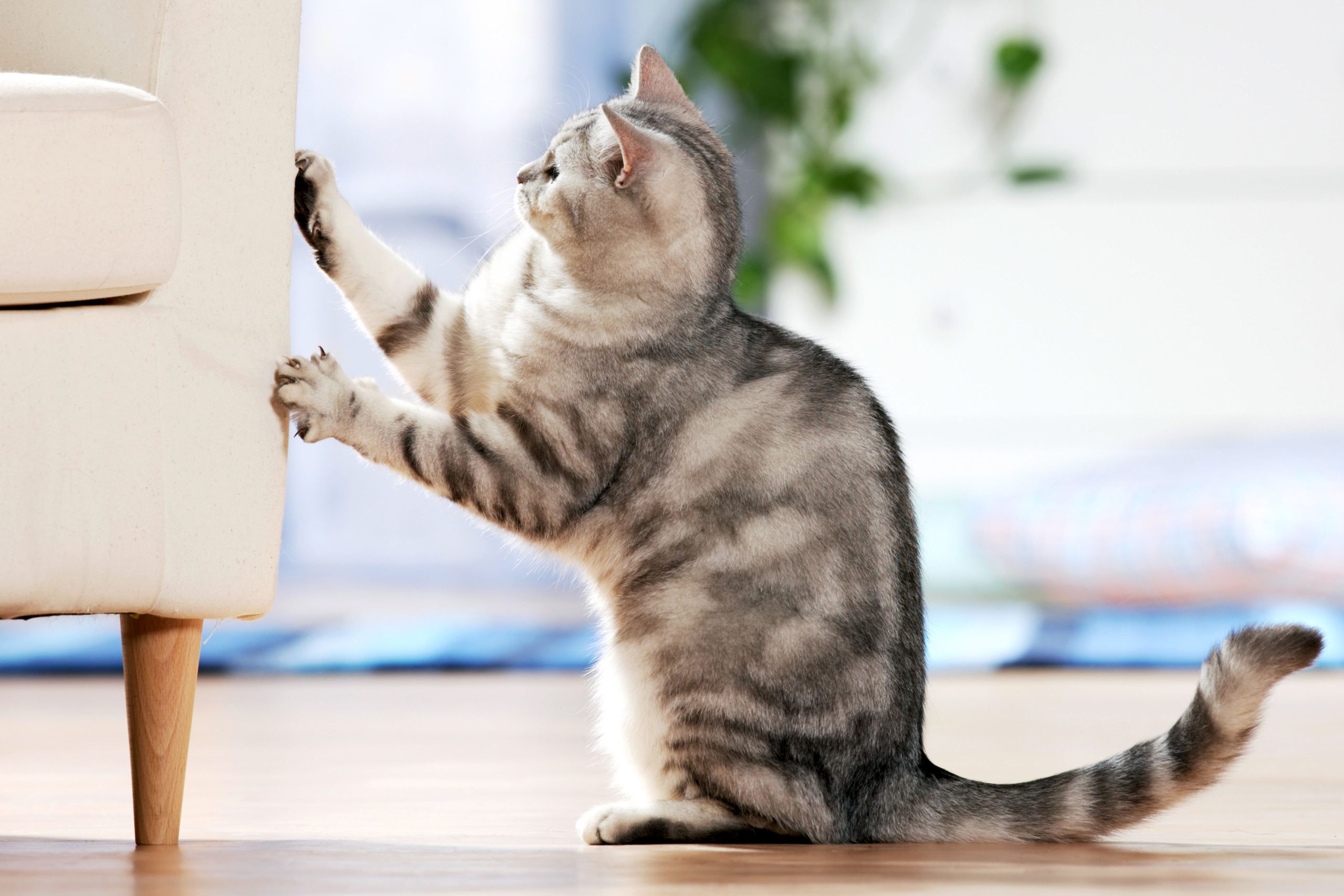7 Common Cat Behavior Problems and How to Solve Them


You like your cat, but as with any relationship, she or he has the ability to drive you insane. While some behaviors are only irritating, others are downright damaging, unclean, or even harmful to one’s health. Here are seven typical cat behavioral concerns and how to resolve them.
1. Furniture Scratching
Scratching is a normal action for cats for a variety of reasons. It enables them to mark territory by leaving a fragrance from the glands on their feet, helping in the removal of the outer layer of claws, and facilitates cats in obtaining a complete body stretch. Additionally, they scratch to express emotion, like as rage or frustration, or even when they are incredibly joyful or excited. Consider other options, such as a wall-mounted scratching board that doubles as a toybox for cat stuff. Due to the fact that it is installed and secure, it may provide a platform for strong, upright full body stretches. Cats also like scratching horizontally, which is why an accordion-style floor scratching wheel may help cats exercise their claws while also providing play possibilities.
2. Excessive Vocalization

If you have an overly loud cat, it’s likely that he or she simply wants to spend time with a cherished human. Rather than shushing, provide a five- or ten-minute focused play session. Retrieve a string or chasing toy and respond. As playing comes to an end, provide a tiny amount of wet food as a treat, which will frequently result in grooming and a post-groom nap.
If your cat continues to be talkative, consider that he or she is alerting you to an issue, such as a spilled water dish, a closed litter box room door, or anything physically upsetting. Bear in mind that a female cat in heat, as well as an unfixed male, will become rather noisy when in close proximity to another feline in heat. If this is the case, the behavior should end after the animal is spayed or neutered.
3. Failure to Use the Litter Box
Failure to use the litter box is a highly revealing habit that should be addressed promptly. The first step is to visit a veterinarian to rule out any medical issues. Urinary tract infections and other related conditions can make going to the bathroom both uncomfortable and urgent. If you have an older cat, it is probable that arthritic joints make stepping into a box with high edges more difficult.
Maintain a clean litter box. Even clumping litter should be dealt to on a regular basis. Additionally, verify that you have an adequate number of litter boxes for the amount of cats that live in your home. As a general rule, one box per cat plus one additional box. The ideal style varies according on the particular cat. While some people thrive with covered boxes, others may object to having only one escape route if they have a particularly aggressive feline in the house. However, cats do want privacy, so if feasible, establish a setting in which they may discharge themselves privately. Additionally, experiment with different types of litter, since textures and scents might vary.
4. Nighttime Activity

Cats have a propensity to be quite alert when their owners are attempting to sleep. If you’re having trouble getting your kitty to settle down when it’s time to sleep, schedule a play session before to night to help wear him or her out. Cats who are too boisterous at night may also indicate a lack of excitement during the day. Provide plenty of toys and materials for investigation, such as boxes and bags, or create a cat place near a window so they can keep a look out for neighboring birds and squirrels. Is your darling home alone? Consider expanding your brood to provide more opportunity for play. The more active cats are throughout the day, the more they will tire out and fall asleep at night.
5. Obtaining Countertops
Cats are natural explorers that need a bird’s eye perspective of their surroundings, which makes countertops and tables very appealing to them. Invest in a multi-level cat tower to elevate your felines. Place transparent rubbery carpet runners upside-down on places you want your cats to avoid while you’re not using them; the roughness diminishes the area’s comfort, making it less attractive than it was when it was a smooth, cool surface. Make certain that no unattended food is left on the counter, as this will undoubtedly attract a feline and encourage the habit with what may be considered as a reward.
6. In the Early Morning
When cats are determined to get you up, they may be rather persistent. The prodding, mewing, and even minor nibbling may eventually convince you to give in… which means your cat has effectively trained you! Reverse the situation and teach him or her by setting an alarm slightly earlier than usual and placing food out. Gradually advance the time by a few minutes every three or four days. After a while, your cat will associate the alarm with food and will anticipate hearing it. A timed feeder can also help keep stomachs filled in the morning, relieving you of some of the burden.
7. Using Glasses for Drinking
What could be better than a refreshing drink of water? Based on the willingness of several cats to share their drink, probably not much. Keep the water in the cat dish clean and fresh to make your glass less appealing. Consider a water fountain that keeps the water circulating and chilled, which can enhance its flavor and eventually make it more desirable than a water glass. Meanwhile, have a coaster or other small object on available to lay over unsecured beverages to deter uninvited lapping.
Take on only a few concerns at a time, as too much change may be overwhelming for the entire family. Establish priorities and focus on a single behavioral issue at a time. While you may not be able to modify your cat’s habits overnight, there is hope at the end of the tunnel.




















